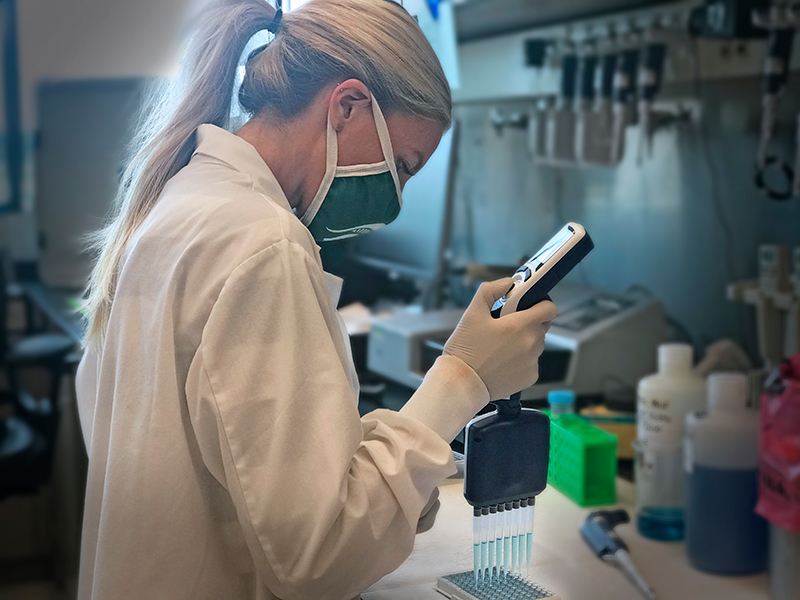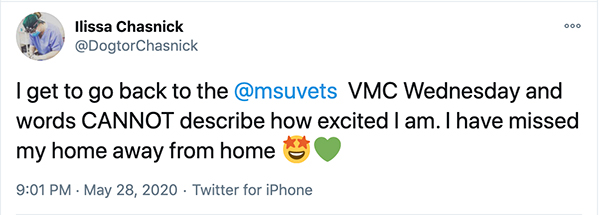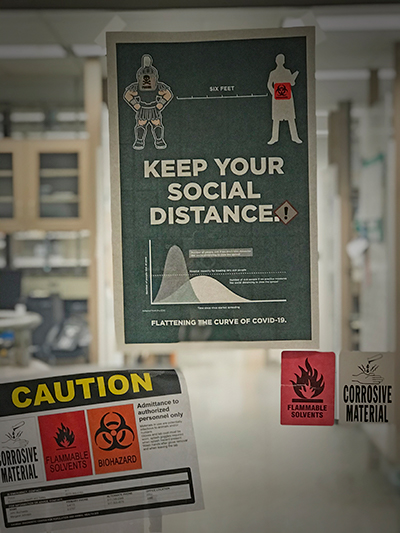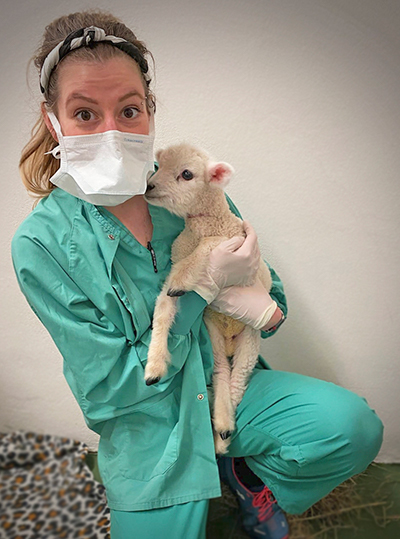Despite an increase in the number of emergent patients, the Hospital and Laboratory continued to provide life-saving diagnostics and care, even while operating under challenging conditions. Around the clock, doctors, nurses, diagnosticians, and veterinary caretakers worked to protect animal health. This work continued even when stress and worry were higher than ever, fatigue was very real, and vacations were much needed.
“First and foremost, the challenges that we’ve been met with are common across all of the veterinary community. Our profession is struggling with the ramifications of COVID-19. It is without a doubt a national trend based on communication with ACVECC—the American College of Veterinary Emergency Critical Care—colleagues around the country. They are reporting that most practices like ours are seeing a 30–40 percent increase in caseload,” says Beal.
Though frontline workers are heroes, they aren’t super heroes, and functioning at this level of busyness with fewer staff is not easy.
“I’ve truly appreciated how nurses from across different services at the Hospital have supported the Small Animal Intensive Care Unit, even though their own services shut down to all but emergencies during COVID,” says Beal. “Along with our own team of ECCM nurses, they were critical to continuing our operations. Special thanks to the doctors from other services that volunteered their time to help out in the ECCM, even though it isn’t their specialty!”
While submissions dropped approximately 45 percent in April due to restrictions on veterinary services in Michigan and around the country, submissions returned to normal in May. The caseload for each week in June exceeded cases received in June 2019.
“As soon as clinics and states opened back up, we have been busier than ever before,” says Grosjean. “We are receiving record numbers of packages every day, which is great. It just makes it very difficult to get all of our testing done while socially distancing, wearing masks, and preparing for COVID testing.”








